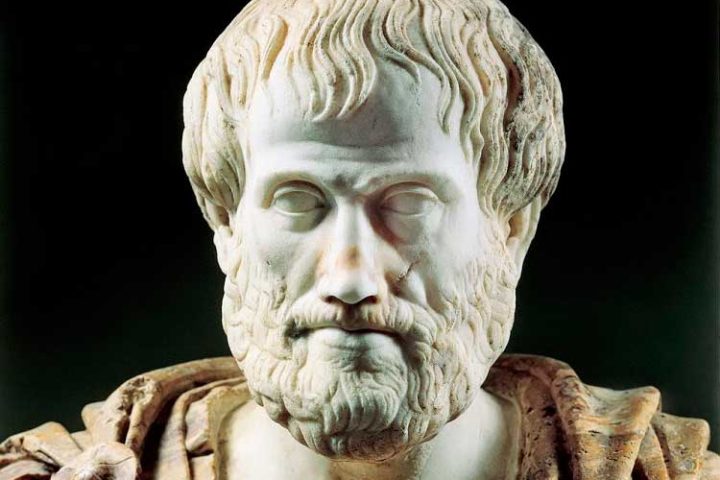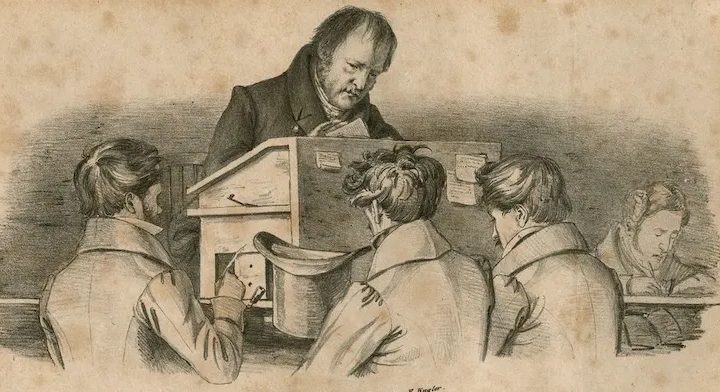The greatest deeds of humankind bear the trace of humble beginnings in terms of display. The outset of events never flaunts the aesthetic grandiosity that the books or movies, in their favored position, and after dusk, make us believe to have had. The glitter that adorns the glory of empires or human arts is only potentially there when the human spirit sets in motion.
If the goal is such as political power, one might imagine a conspiratorial scenario like the one of the cunning Darius concocting his plans to oust Bardiya (the real or the fake one) with Arthaphernes and five others might evoke in us a cinematic scene of riders running through the Khorasan highway to fulfill their destiny (Holland, 2005, p. 27). However, if arts and science are to be the starring elements in the events to discuss, we have no needs of a heroic cavalcade. The beginning is humble too, simple, and probably occurred around a table and a conversation.
The latter is the case of German philosophy in the heroic times of its maturity in the late 18th century. But the emphasis is not to be placed on the widely known Weimar circle, where Schiller and Goethe entertained the most enlightened intellectual court in all the German lands. When it comes to the beginnings of the German “classical” philosophy, we have another one: Immanuel Niethammer’s circle. During the raging 90’s (raging with the thundering of the neighboring revolution) the German intellectuals were shaken by the public irruption of Kantianism as a trend and a movement. The consequences of the Critiques, whether they were Kant’s original intentions or not, had posed a threat to the moralistic society where it blossomed. The Kantian philosophy had made its entrance into German thought as a novel search for freedom and reason, and it posed a good principle for the enlightened generation that sought to solve the sundered totality they faced in German lands at the time.
And it’s precisely there, in Niethammer’s house, where a heterogeneous group of students gathered. Most of them, at least during the first years, were undoubtedly anti-Fichtean, and sustained an anti-foundationalist position that was a strong reminiscence of Jacobi’s influence. But despite the original orientation, the arrival of Fichte as substitute of Reinhold at Jena´s university, made possible the unlikely meeting that happened during the first days of May in the year 1795, when Friedrich Horderlin, Novalis, Johan Fichte and Niethammer himself, all of them representatives of the best of the German philosophy at the time, sat to discuss and shared their views.
Horderlin, who had recently published Hyperion in 1795 (Heinrich, 2003, p. 75), was already a known author and still had philosophy as his main endeavor. Fichte was close to the zenith of his career. His prestige was at its highest after his Attempt at a Critique of all Revelation (1792) and his lessons at Jena had reinforced his public position as the next, although criticized, representative of the new German philosophers (Parkinson & Shanker, 2004, p. 171). Novalis, the youngest of the attendees, was on the rise as one of the most transcendental romantic poets in the golden age of German spirit. And Niethammer, the host of these meetings, the lesser known of them, yet probably the most influential, was to impact German philosophy and education for another 50 years. His name and his fate were bound, since his early formation in the far too important Tubingen Seminary, to the very best of the then-nascent German critical philosophy.
Right after these meetings, where these gentlemen met and shared views on the impending issues of the times, the path they all followed shaped the continuity of no small part of German intellectual life in a significant way. Novalis and Horderlin, both for different reasons, but in a common feeling, abandoned philosophy and dedicated their efforts entirely to poetry, standing as two of the most notorious romantics (or Pre-romantics) in German intellectual history. Fichte, the first star of the second post Kantian generation that had claimed an original position towards the philosopher, went on to publish unstoppably until the polemics over atheism that engulfed his editorial and professional career during the final years of that turbulent decade.
Niethammer, on the other side, the one who get less attention as a philosopher by posterity, started at first alone, and with Fichte after 1797 (Wezn, 2009, p. 13), the promotion of German “latest philosophy” (as Hegel called it) from his Philosophisches Journal einer Gesellschaft Teutscher Gelehrten[1], the revolutionary model of the post-Kantian(Ameriks, 2000) philosophical Journal that had a brilliant aftershock in Schellings Kritisches Journal at the beginning of the next decade. His philosophical career was also hampered because of the Atheism dispute, and thereafter his works were forever to be focused on managerial and pedagogical issues, where he continued to make an impact.
From these early gatherings in Jena, we can get the tragic fate that a whole generation of talented philosophers and theologians had to endure. Holderlin and Novalis, consumed by passion as the rest of the early romantics, not only lost their interest in philosophy, but lost their reason, and eventually their life in an untimely manner. Fichte found the dogmatic limits of the society where he lived and met an undeserved end for such an important intellectual character. And Niethammer, the real survivor, only managed to do so, in so far he abstained from his early explorations of philosophical themes.
Yet, the works of those assembled there, as its widely known, were not in vain. The flame of Kantian inquiry, which Fichte undoubtedly rekindled, was kept alive and philosophy lived on, even through the cracks of censorship and the demise of the bulk of German nations before the Napoleonic onslaught. Niethammer, on the other hand, one of the silent giants of those times, managed to become a good friend and supporter of Hegel, and from his later position in the Bavarian government, he pushed forward the educational reforms that were part of the overwhelming growth of German science and scholarship during the following century.
Ironically, as with many other important gatherings in History, we still don’t know what they discussed during their meetings (Ameriks, 2000, p. 155). Philosophy was present, as is to be expected, and the evolution of mutual influences can be traced thanks to the cooperation that they all established after these encounters. But the real content of those peculiar symposia will remain lost, as part of the modest and unbeknownst beginnings of the golden age of German philosophy.
Notes
[1] Philosophical Journal of a society of German enlightened.
References
Ameriks, K. (2000). The Cambridge companion to German Idealism. Cambridge: Cambridge University Press.
Heinrich, D. (2003). Between Kant and Hegel. Lectures on German Idealism. Cambridge, Massachusetts: Harvard University Press.
Holland, T. (2005). Persian Fire. The first World Empire and the battle for the West. New York: Anchor books.
Parkinson, G. H. R., & Shanker, S. (2004). The Age of German Idealism. London: Routledge.
Wezn, G. (2009). Friedrich Immanuel Niethammer (1766-1848). In G. Wenz (Ed.), Friedrich Immanuel Niethammer (1766-1848). Beiträge zu Biographie und Werkgeschichte. München Verlag der bayerische Akademie der Wissenschaften.





